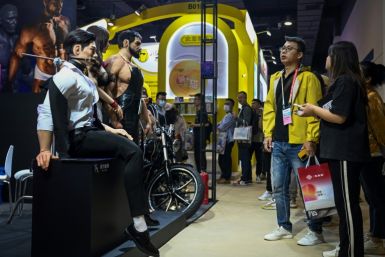7 Groundbreaking Green Cars
For the last seven years, Green Car Journal has recognized the best in eco-friendly motoring via the magazine's Green Car of the Year contest. Each year the magazine assembles a judging panel comprising automotive experts, journalists and environmental advocates. The sole task of the panel is to determine which Green Car of the Year finalist deserves recognition as the best of the best for that model year.
Green Car Journal started handing out the award with model year 2006 vehicles. Over the years the magazine has recognized several hybrids, two clean diesels, a plug-in vehicle, a natural gas vehicle and even a full-sized SUV as the Green Car of the Year.
2006: Mercury Mariner Hybrid
Photo: Mercury
The first Green Car of the Year wasn't even a car; instead a midsized hybrid SUV earned the top honor. A judging panel that included automotive legend Carroll Shelby and eco-advocate Jean-Michel Cousteau chose the Mercury Mariner Hybrid as the 2006 Green Car of the Year. Other finalists included the Honda Accord Hybrid, Honda Civic Hybrid, Lexus RX 400h and the Toyota Highlander Hybrid.
The 2006 Mercury Mariner Hybrid came equipped with a 133 horsepower, 2-3 liter, four-cylinder engine. The integrated 94 horsepower electric motor delivered V-6-like performance to the sporty four-wheel drive SUV. With a combined fuel efficiency rating of 27 mpg, the Mercury Mariner Hybrid's fuel efficiency was nearly 40 percent better than the non-hybrid four-cylinder Mariner.
2007: Toyota Camry Hybrid
Photo: Toyota
Toyota's third hybrid vehicle, the Toyota Camry Hybrid, was named the 2007 Green Car Journal Green Car of the Year. In 2007, the Toyota Camry had been the best-selling car in the nation for eight of the previous nine years. The fact that Toyota chose to produce a hybrid version of the popular vehicle was a milestone in the eco-motoring market. The new Toyota Camry Hybrid was the first hybrid vehicle produced with the mass market in mind. Until that point, most hybrids were geared toward a niche market, but Toyota was going after a wide range of consumers with the Camry Hybrid.
The 192 horsepower 2007 Toyota Camry Hybrid received a 40 mpg city fuel efficiency rating from the EPA. This was significantly higher than the non-hybrid rating of 24 mpg in the city. While the superior fuel efficiency of the Camry hybrid was attractive to consumers, the competitive pricing was also cited as a reason that the vehicle was named the winner.
Jason Mark, vehicles director for the Union of Concerned Scientists, commented on the sedan's value, "The Camry not only protects the planet, it protects consumers' pocketbooks. It's one of the most cost-effective hybrids on the market."
2008: Chevrolet Tahoe Hybrid
Photo: Chevrolet
The declaration of the Chevrolet Tahoe Hybrid as the 2008 Green Car of the Year might have been one of the more surprising announcements in the award's history. The full-sized SUV received more votes than the Chevrolet Malibu Hybrid, Mazda Tribute Hybrid, Nissan Altima Hybrid and the Saturn Aura Hybrid, each with a higher fuel efficiency rating than the Tahoe Hybrid.
While the hybrid SUV received only a 21 mpg city fuel efficiency rating from the EPA, the Green Car Journal pointed out that this was the same fuel efficiency rating given to the four-cylinder Toyota Camry Sedan.
After the announcement, Green Car Journal editor Ron Cogan shared his thoughts about an SUV receiving the award. "This is a milestone in many respects. People don't think 'green' when SUVs are concerned, and for generally good reason since SUVs often get poor fuel economy compared to most other vehicles. Chevrolet's Tahoe Hybrid changes this dynamic with a fuel efficiency improvement of up to 30 percent compared to similar vehicles equipped with a standard V-8."
2009: Volkswagen Jetta TDI
Photo: Volkswagen
Eco-motoring enthusiasts were surprised yet again with the announcement that the Volkswagen Jetta TDI was the 2009 Green Car of the Year. The first three green cars were all hybrid models but this year, the panel of judges went a different direction and named a clean diesel model as the ultimate in green motoring for the year.
Volkswagen's diesel-powered Jetta wasn't the only clean diesel engine among the finalists; BMW's 335d was also in the running. Other finalists were the Ford Fusion Hybrid, Saturn Vue 2 Mode Hybrid and the smart fortwo.
The Jetta TDI was recognized for achieving emissions certifications in all 50 states without the need for fuel additives. Fuel efficiency on the five-passenger vehicle was 41 mpg on the highway, which was similar to the fuel efficiency of several gasoline-electric hybrid models. As a bonus, the Volkswagen Jetta TDI came with an MRSP of only $21,990, a comfortable price point for many consumers searching for a new fuel-efficient vehicle.
2010: Audi A3 TDI
Photo: Audi
Clean diesel technology also powered the 2010 Green Car of the Year, the Audi A3 TDI. The 2010 panel of judges included Carl Pope, executive director of the Sierra Club, and automotive aficionado and television host Jay leno. Competition in 2010 was tight with the best-selling hybrid Toyota Prius among the finalists. Other finalists were the new-to-market Honda Insight Hybrid, the Mercury Milan Hybrid, and the Volkswagen Golf TDI.
With a 42 mpg highway fuel efficiency rating, the 2010 Audi A3 TDI was 50 percent more fuel efficient than the gasoline powered A3. Equipment on the entry-level luxury vehicle included 17-inch alloy wheels, xenon headlights, leather upholstery and a 10 speaker concert sound system. Combine the luxury accommodations with 140 horsepower and 236 lb-ft of torque at 1,750 rpm and you have an exciting yet fuel-efficient vehicle to drive.
2011: Chevrolet Volt
Photo: Chevrolet
The face of the Green Car of the Year competition changed in 2011 with the addition of two plug-in vehicles to the finalist roster, the Chevrolet Volt and the Nissan Leaf. Ultimately the Chevy Volt was declared the 2011 Green Car of the Year, beating out the Leaf as well as the Ford Fiesta, Hyundai Sonata Hybrid and Lincoln MKZ Hybrid.
Chevy's extended range electric car provides up to 50 miles of emissions-free driving on a single charge. At that point a gasoline-powered on-board generator kicks in to extend the driving range of the vehicle an additional 300 miles. The combination of electric-only and gasoline-powered driving led to a 93 MPGe (miles per gallon equivalent) fuel efficiency rating in all-electric mode and a 37 mpg combined rating if the car operated solely on gasoline.
Nearly a year after the 2011 Green Car of the Year announcement was made, MNN blogger Jim Motavalli placed the Chevy Volt in the number one spot on his list of the top 10 electric cars most likely to succeed. General Motors recently restarted production of the Chevy Volt after a multi-month shutdown and the company is now prepared to produce 60,000 Chevy Volts annually.
2012: Honda Civic Natural Gas
Photo: Honda
The tide turned yet again this year with a different technology powering the 2012 Green Car of the Year. Last year's electrified Chevy Volt was replaced with the natural gas-powered Honda Civic. The Civic was the last vehicle standing among a field that included two electric vehicles, one hybrid and one clean diesel model.
Honda has been producing a natural gas-powered Civic since 1998 but due to its limited availability, the vehicle hasn't been a top seller for the company. Honda is changing its marketing plan this year and the Advanced Technology Partial Zero Emissions Vehicle will be available at 200 dealerships in 36 states.
Drivers can expect a 240-mile driving range on a tank of natural gas. A fast-fill can be completed in about five minutes at compressed natural gas fueling stations. Alternately, owners can refill the vehicle overnight with a wall-mounted system. With natural gas prices running about 30 percent less than gasoline prices, consumers looking for a vehicle that is both easy on the environment and easy on the budget should see if the Honda Civic Natural Gas is available in their area.
MNN homepage photo: Shutterstock
Mother Nature Network






